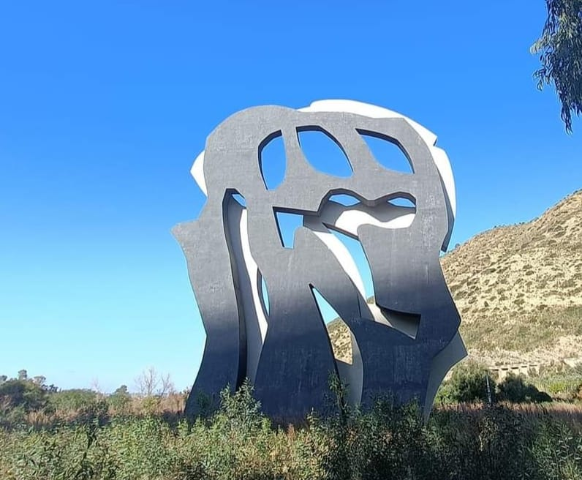
Matter might not have been there
Pietro Consagra's work represents the first installation of the Fiumara d'Arte contemporary sculpture park, inaugurating the ambitious open-air museum project conceived by Antonio Presti in 1986.
The monumental sculpture stands in the vicinity of the Tusa River bed at the junction to Pettineo. It is a double-faced bichrome made of reinforced concrete, consisting of two parallel and distinct elements that stand about 18 meters high and 3 meters thick.
Eternal struggle between Good and Evil
The two volumes, colored black and white respectively, symbolize the opposition between good and evil. The structure creates a striking interplay of solids and voids that allows the sculpture to blend harmoniously with the surrounding landscape.
Over the years, this work has become an integral part of its natural environment, establishing a constant dialogue between contemporary art and the Sicilian territory.
Later, in 264 B.C. at the outbreak of the First Punic War, Halaesa made an alliance with Rome. As a result of this alliance it had the privileges of being exempt from paying tithes, electing senators and magistrates, and governing itself independently. Under Augustus it became a Roman "Municipium." In imperial times it underwent a gradual decline, which reached a climax when it was sacked by the Arabs in the mid-9th century.
In 846 after a violent earthquake, almost the entire population abandoned Halaesa and moved not far away to the place where the Borgo di Tusa stands today. The place name "Tusa" derives from the Arabic tasa with the meaning of "new, recent."
Tusa continued to prosper because of its fertile valley and favorable location for maritime trade.

